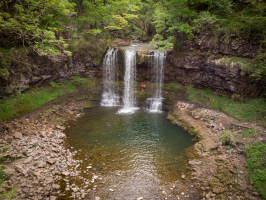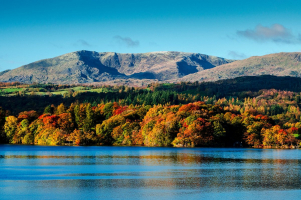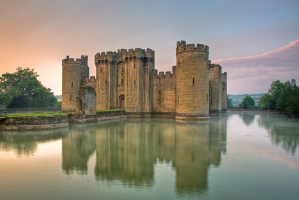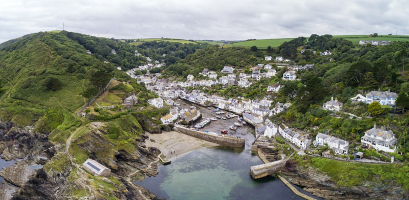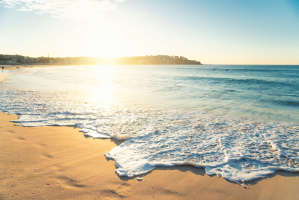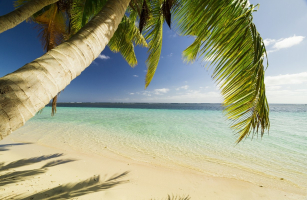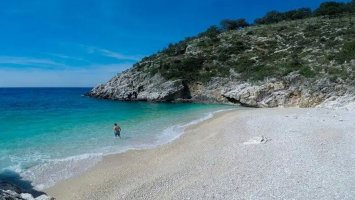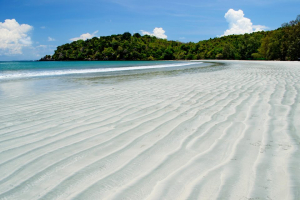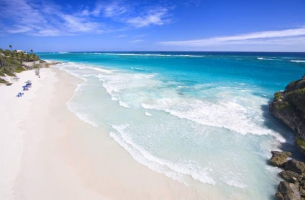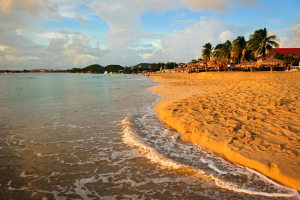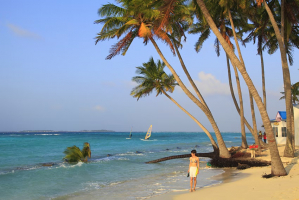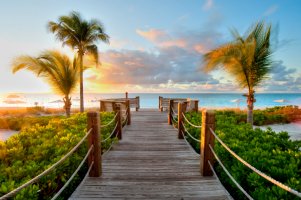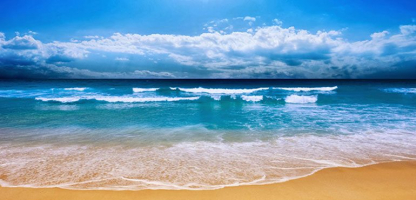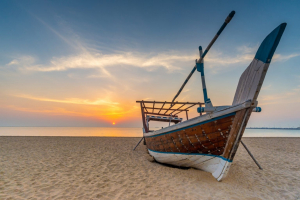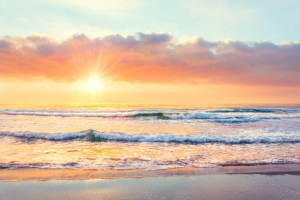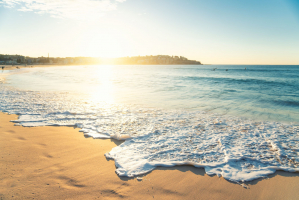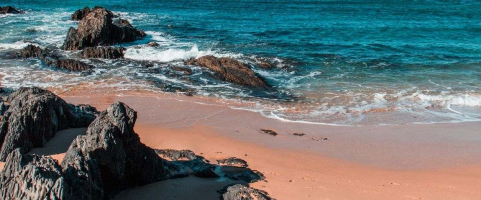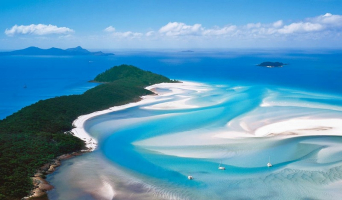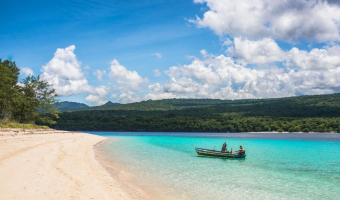Top 12 Most Beautiful Beaches In The Uk
When most people think of Britain, they see dismal skies, biting winds, and severe rains, rather than the gorgeous beaches that the British Isles have to ... read more...offer. In actuality, Britain has its fair share of sunny days, which are ideal for exploring the country's coastline areas of remarkable natural beauty. Beaches in the United Kingdom come in many forms and sizes, with a variety of terrains and microclimates. From the well-known Cornish coast to the hidden sandy coves of Scotland, we've searched far and wide to offer you our selection of the greatest beaches in the UK, as well as places to stay nearby for a UK weekend getaway. For additional ideas, check out our list of Europe's top beaches.
-
Several paths run through the grasslands above the Gower Peninsula's limestone cliffs, passing through tiny marshes, untidy meadows, and castle remains before arriving at Three Cliffs Bay — a stunning little bay that is certainly one of Wales' most attractive places. In the rugged peaks out towards the ocean, a river meanders around the bay.
This is a lovely beach with a wide-open harbor that gets its name from three little cliffs in the midst of it. It's one of the most beautiful bays in the vicinity. One thing to keep in mind is that the journey down is relatively steep, so be prepared to climb back up if you go all the way down. This natural occurrence creates a narrow wetland that oozes into a beach dotted with rushes, rock pools, and tiny lagoons. It's a short, lovely trip from Swansea and easily accessible from a designated parking lot, so don't miss it.
There are stepping stones to bridge the creek, which is rather large, and Pennard Castle, also known as Three Cliffs Bay Castle, lies close. You can climb the sand dunes and (slowly) stroll towards the top of the Three Cliffs, which is very impressive. There are also several caverns under the cliffs to explore and rock pools to play in!
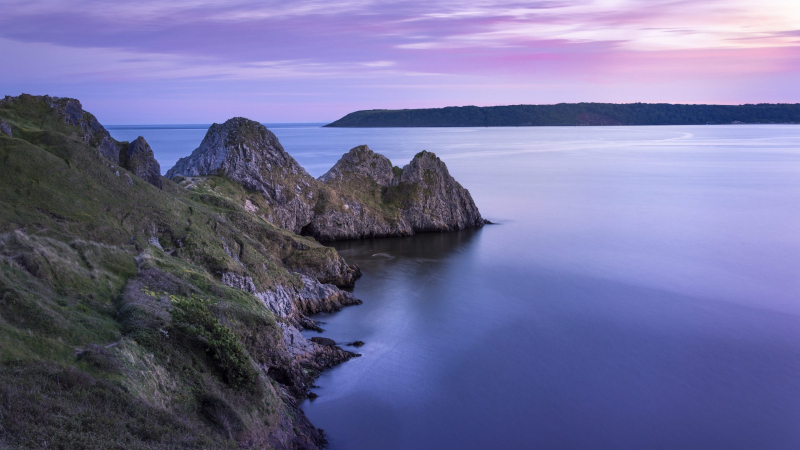
Three Cliffs Bay, Wales 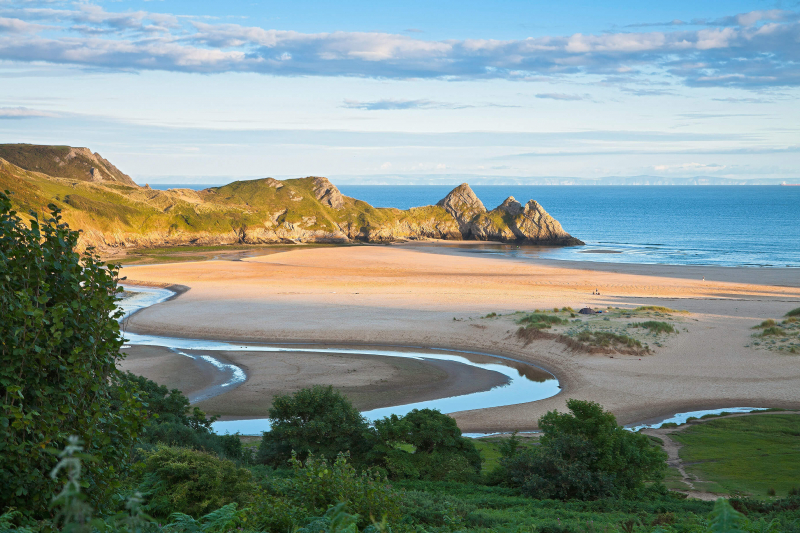
Three Cliffs Bay, Wales -
With its pearly-white sands and tranquil, cerulean-blue waves that meet crisp, cloudless skies, Luskentyre Beach appears like a South Pacific paradise (although with some very chilly temps). Luskentyre, in reality, runs down the western coast of the Isle of Harris, just off the northwestern corner of Scotland, and it's gloriously solitary and tranquil, with panoramic views of the ocean that make it appear to cling to the edge of the earth.
We uncover the greatest things to do on the Hebridean Isle of Harris, from visiting world-class beaches to adventure kayaking.
1. BEACH OF LUSKENTYRE
Luskentyre Beach, which is regularly named in the top five of the world's greatest beaches, offers blue seas with vistas of the highlands of Harris and the Isle of Taransay.
2. GEARRANNAN BLACKHOUSE VILLAGE
On the Isle of Lewis, a unique, maintained crofting settlement with traditional Hebridean blackhouses along a sandy beach. Some of these properties are offered for vacation rental.
3. HARRIS TWEED
Pay a visit to the Campbell family's Harris Tweed Shop in Tarbet.
4. KAYAKING AND CANOEING
Harris Outdoor Adventure offers guided sea kayaking and canoeing tours. Sailing, wind karting, and bike rental are all available.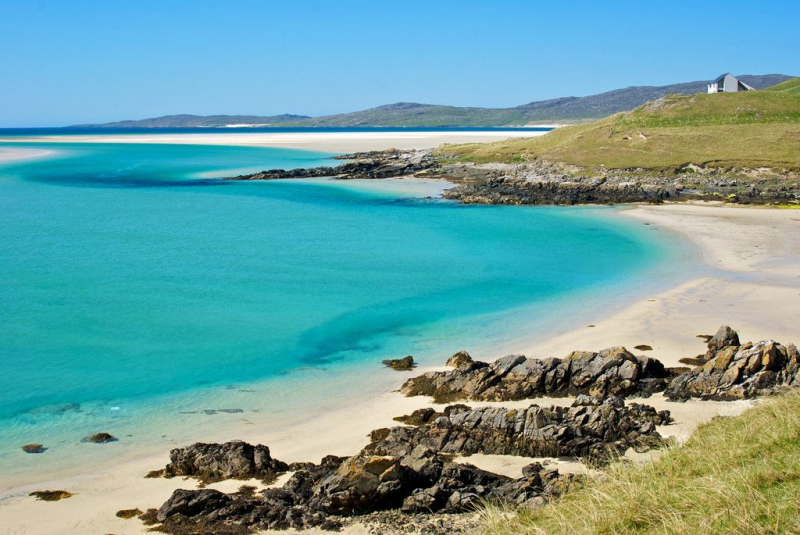
Luskentyre, Isle of Harris 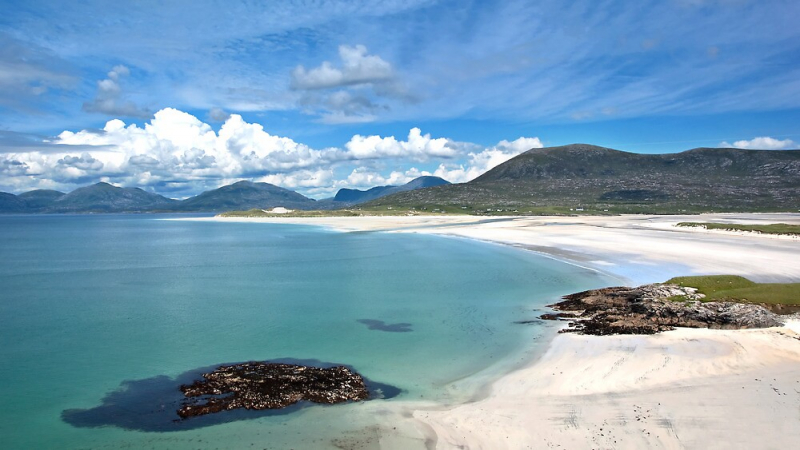
Luskentyre, Isle of Harris -
Traigh Iar beach, in a remote region of the United Kingdom, has an otherworldly beauty. Traigh Iar is a quiet crescent-shaped beach on the western side of North Uist Island, off the western coast of Scotland. It is flanked by the Hebrides' characteristic and magnificent machair topography. Cattle and wild horses roam in the vicinity of the occasional thatched-roof cottage. The beach is pleasantly private, the waves are calm, and the air on the island is clean. Skye has a regular ferry service. Traigh Iar beach provides stunning views across the island.
North Uist may be reached via ferry. Lochmaddy, the port where you will land, was formerly a major herring fishing port, and there are many things to do and see in the surrounding region.Traigh Iar, a 4km-long crescent of pristine sand, is one of North Uist's best beaches. To get there, take an easy stroll along Tràigh Vallaigh's beach. This stroll may be as long or as short as you choose.
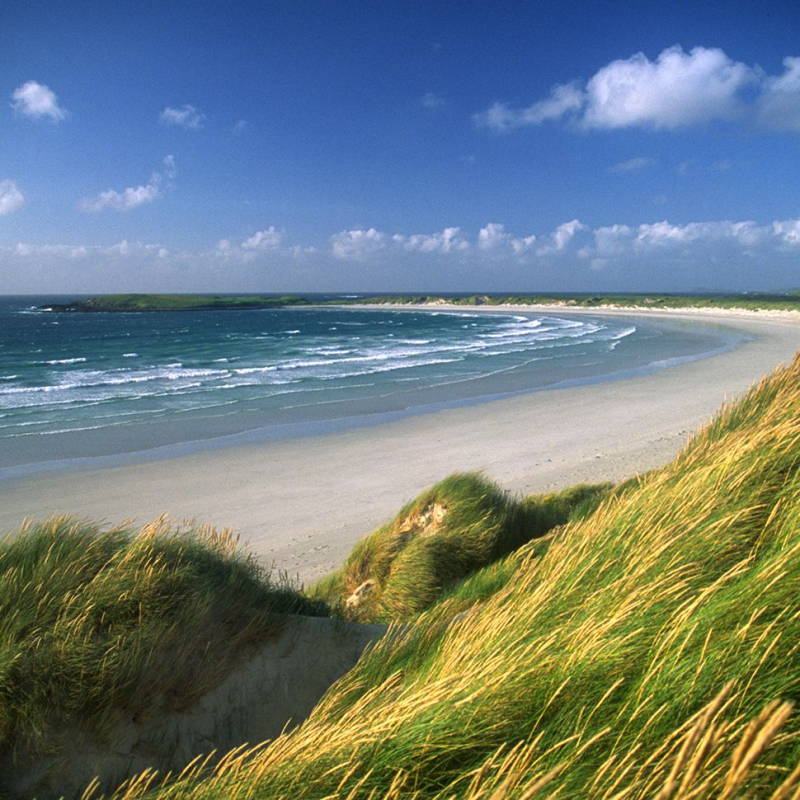
Traigh Iar, North Uist Island 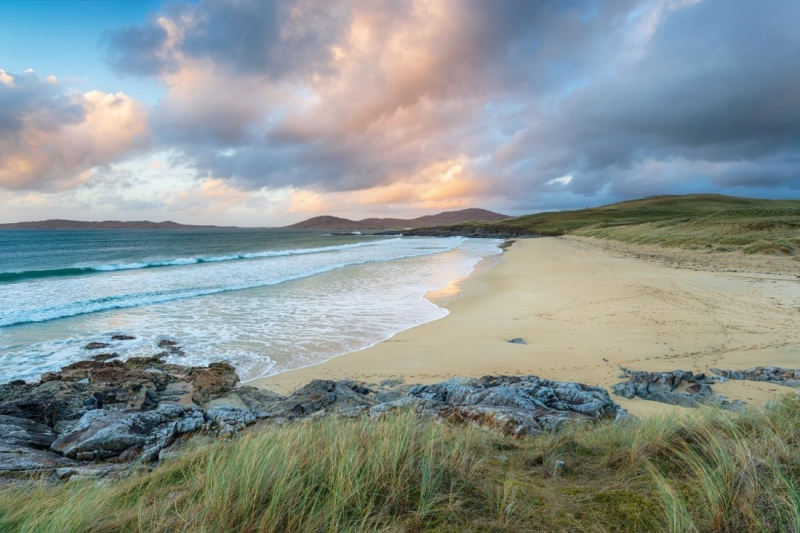
Traigh Iar, North Uist Island -
Llanddwyn is a charming tiny island connected to Anglesey's west coast in North Wales by a thin causeway surrounded by many small coves and sandy bays. A meandering walk leads through rugged cliffs and grassy verges to the renowned white lighthouse, which sits on a rocky hill overlooking the Irish Sea. Llanddwyn, mystical and ethereally lovely, is said to be the place where St Dwynwen, the Welsh patron saint of love, resided after being rejected by her family and attacked by the man she loved. The legend of St Dwynwen appears to envelop the island, imbuing the beach with a touch of magic. It's a lovely tidal island most known for its association with Saint Dwynwen, the Welsh patron saint of lovers.
Llanddwyn is one of Britain's best-kept secrets, yet it's easily accessible as a day trip from most parts of North Wales. It's a bit of a hike, but our Llanddwyn guide will teach you all you need to know. This is one of the finest days out in Wales, if not the entire UK. If you're willing to travel two hours each way, you could also get there from Chester, Liverpool, or Manchester.
You should attempt these activities: the trek over Llanddwyn Island, which is short but thrilling; or you can locate the nicest lodging on Anglesey in the region between Menai Bridge and Beaumaris, which is where we recommend.
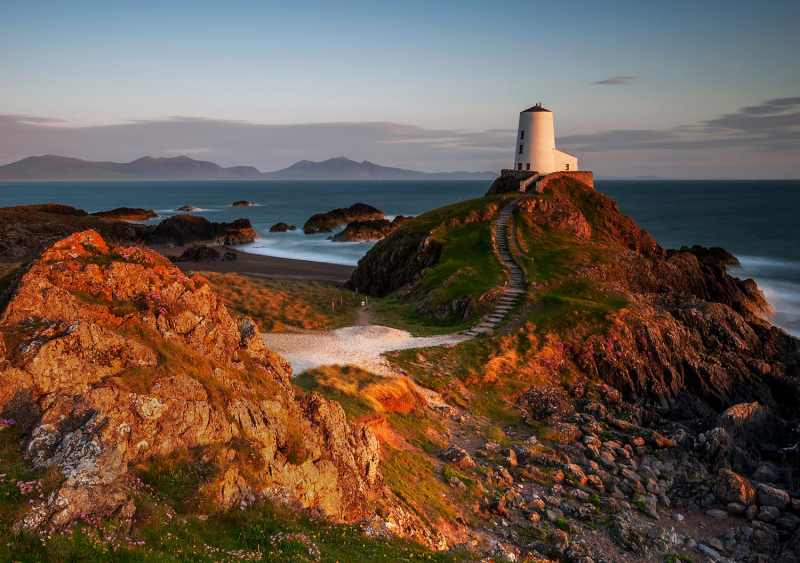
Llanddwyn Island, Wales 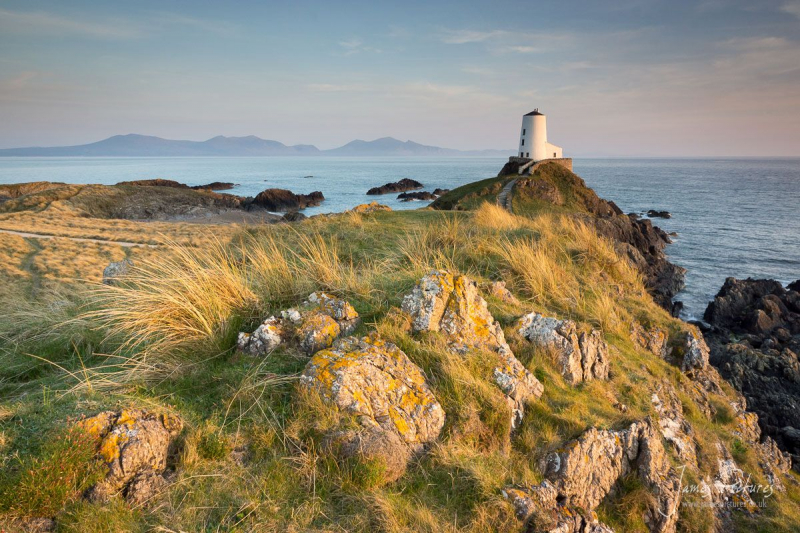
Llanddwyn Island, Wales -
Guernsey is a small English Channel island that belongs to the United Kingdom but is physically closer to the French coast of Normandy. Guernsey is accessible from England via the swift Condor ferry and has beautiful beaches such as Vazon, Cobo, and Grandes. Moulin Huet is an exclusive and picturesque tiny cove that may be the most idyllic on the island. This picturesque beachfront area, hidden by dark cliffs and studded with big rock formations, was visited by French impressionist painter Pierre-Auguste Renoir, who spent the summer of 1883 drawing it.
Guernsey has a wide range of hotels, self-catering accommodations, guest houses, and campsites. Escape the humdrum with a holiday in Guernsey and explore islands brimming with local character and stunning environment. You may be touring the island in only a short flight or ferry ride from the UK.
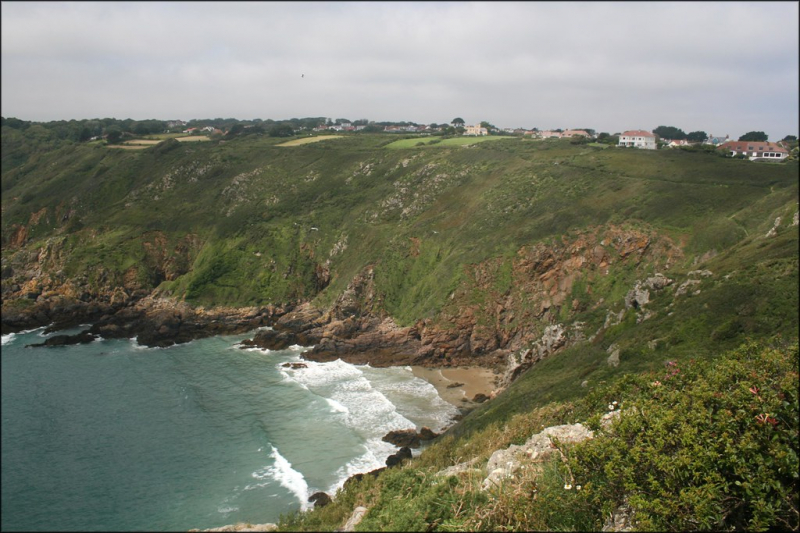
Moulin Huet, Guernsey 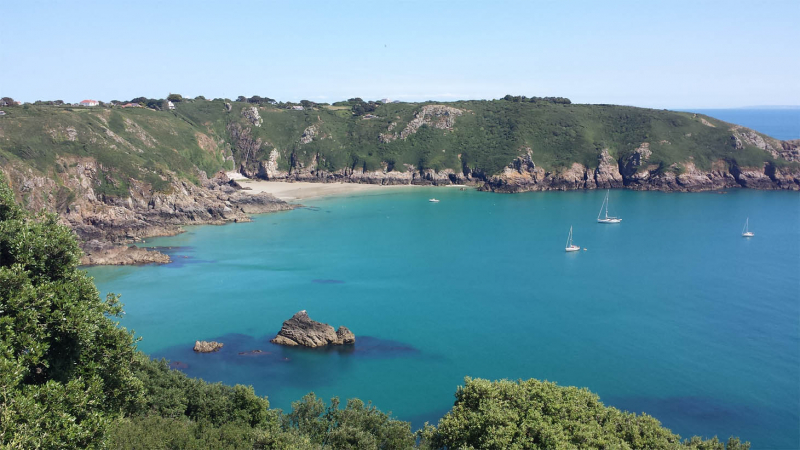
Moulin Huet, Guernsey -
Holkham Beach is a panoramic beachfront flanked with windswept rushes, towering grasses, and spectacular sand dunes in Norfolk, England. It's a component of the Holkham National Nature Reserve, which covers 3,706 hectares (9,158 acres) of British territory. The walk from the car park is 4.8 kilometers (3 miles), which deters many visitors, resulting in crowds that are often pleasant. When the water recedes, the hazy beach is nearly completely submerged, leaving shallow streams and small lagoons. The romantic setting for the 1998 film Shakespeare in Love was Holkham.
In any case, why not build your own windswept dramatics on the kilometers of white-gold sand and the tangle of rivers and saltings, then cool down amid the shade pinewoods that surround the beach? Wells-next-the-Sea is a short stroll down the shore, where you may pause for a pint at the Crown on the village green. Alternatively, drive inland to Holkham Hall, which has a renowned film career, having appeared with Keira Knightley and Ralph Fiennes.
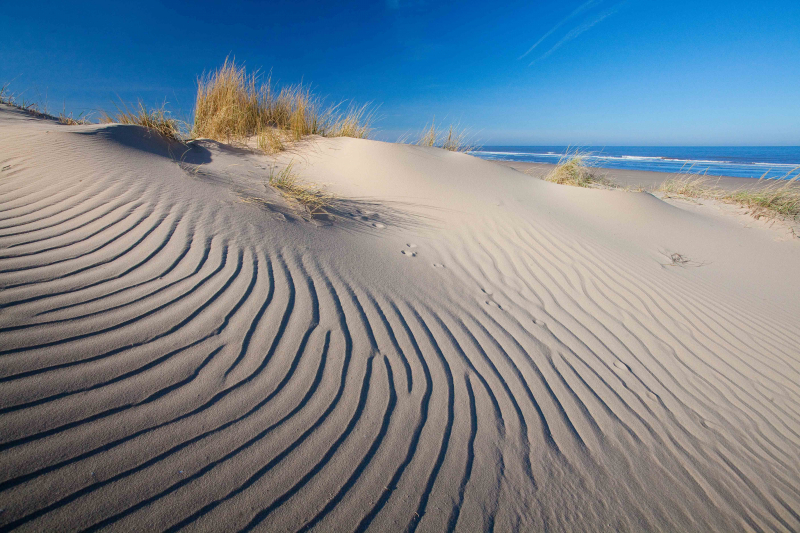
Holkham Beach, England 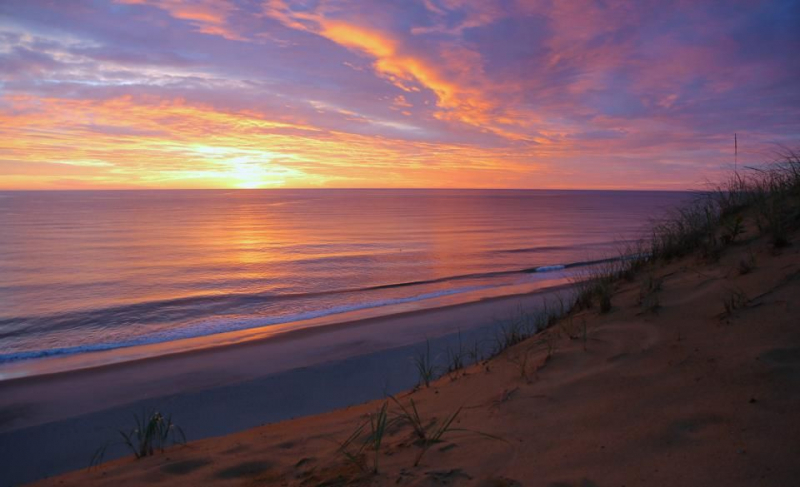
Holkham Beach, England -
Rhossili Beach in southern Wales is distinguished by its lovely green slopes that descend directly to the beachfront. Rhossili, less than an hour from Swansea, is officially recognized as a region of outstanding natural beauty, with three kilometers (1.9 miles) of golden sand. It curls around the base of the emerald-green summer slopes that become fiery-auburn in the autumn. Worm's Head, a long, serpent-like island connected to the mainland by a rocky causeway, is the bay's most famous land.
The cliff walk goes either east to Mewslade Bay or west to Worm's Head and Rhossili Bay. The National Trust owns and protects a large portion of the land on the Gower Peninsula. The Trust has a tourist facility at Rhossili, close to the Warren, Rhossili Down, Worm's Head, Rhossili beach, and coastal cliffs.
The most popular things to do in Rhossili with kids according to Tripadvisor travelers are: Worm's Head; Rhossili Bay; Mewslade Bay; See all kid friendly things to do in Rhossili on Tripadvisor.
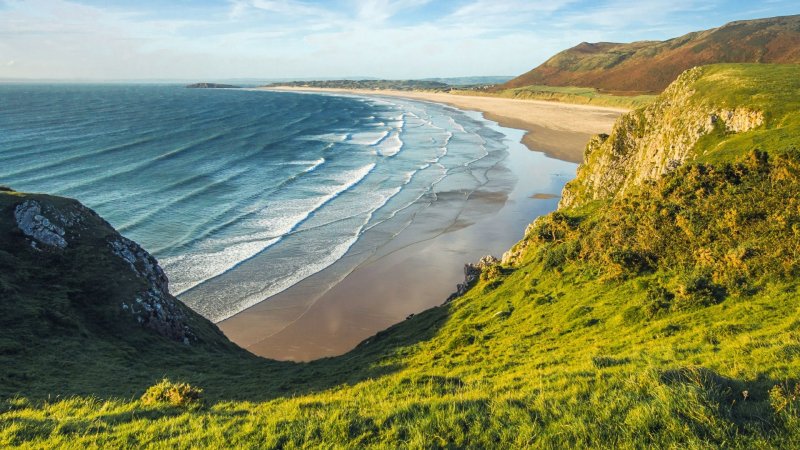
Rhossili, Wales 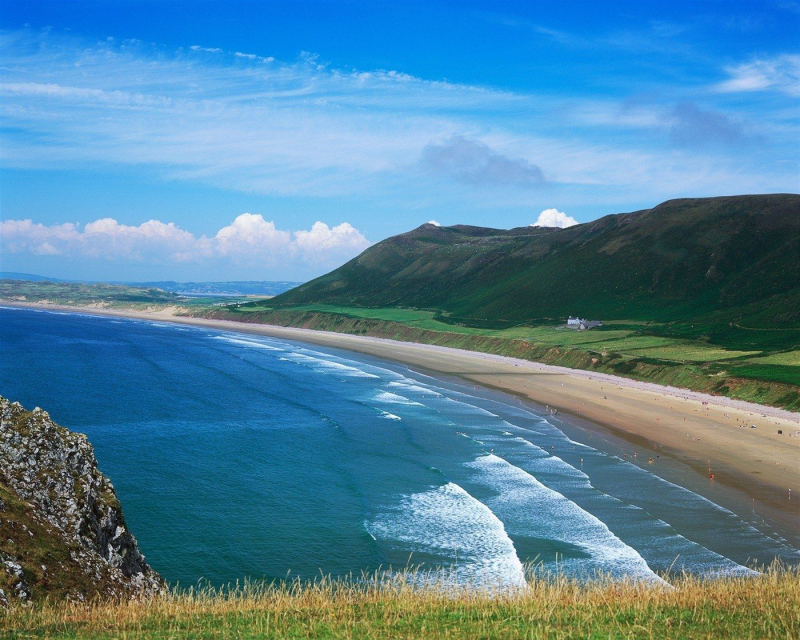
Rhossili, Wales -
Murlough Beach, in Northern Ireland, is part of the Murlough Nature Reserve. It's a 5km (3 mile) length of pristine white sand at the foot of the Mourne mountain range's gloomy peaks. Because there is no vehicular access beyond a certain point, it is frequently peacefully silent. The beach is backed by a magnificent collection of 6,000-year-old dunes, many of which are carpeted in wild grasses and beautiful flowers, making it a significant ecological site and home to several butterfly species. Wild horses, poultry, and waders can be seen roaming the sand dunes, while the elusive and gorgeous grey seal can be seen frequently in the water.
The Murlough Bay Walk begins with the Murlough Road car park. Pass the old Glens of Antrim brewery on your way north to Knockbrack Viewpoint. Good sight is close where the road makes a hairpin turn before heading southeast towards the shore and finishing with another little parking park. As a result, you should aim to stroll beside this location.
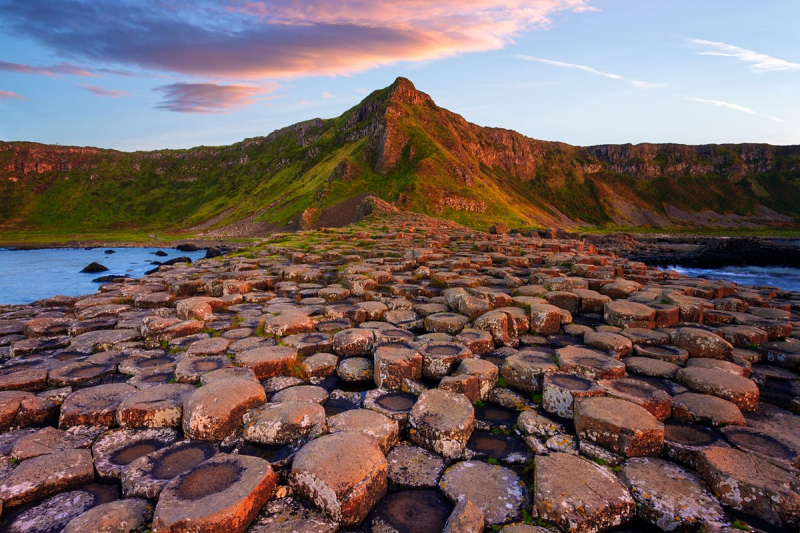
Rhossili, WaleMurlough, Northern Ireland 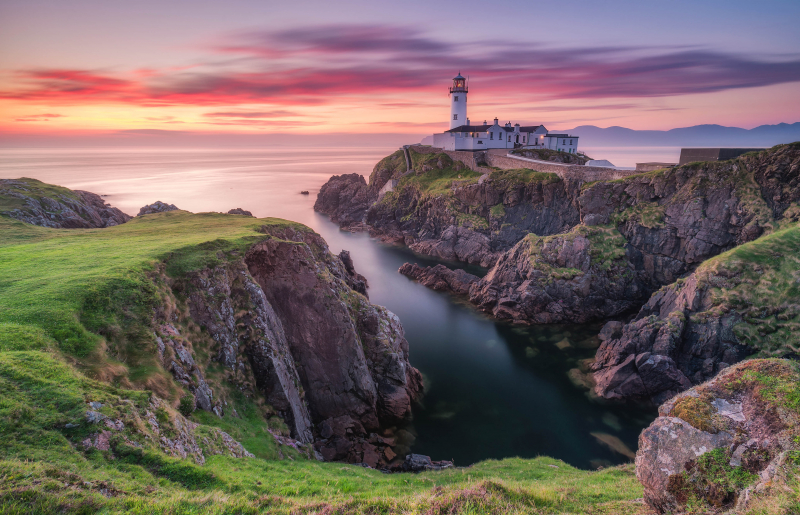
Rhossili, WaleMurlough, Northern Ireland -
Marloes Sands, in Pembrokeshire, Wales, is a fascinating geological location as well as a one-of-a-kind, breathtakingly beautiful beach. The tiny beachfront is lined with very dark, inclined rocks, and the waves are quite magnificent. It is located on the tip of the Pembrokeshire coast (the nearest town is Pembroke) and is surrounded by a large nature reserve, ensuring that it is kept in immaculate condition.
Beautiful, vast area with numerous intriguing rock formations to scramble up or simply enjoy. It's a little out of the way, with a car and a 10-15 minute walk. Come a couple of hours after high tide to obtain a good amount of sand to play on, as well as time to explore the entire (big) beach without fear of being caught. Martin's Haven is a lovely little cliff top stroll.
A visit to Marloes Sands, Wales, is likely to make you feel as if you have entered another universe, due to the sheer beauty of the raw, rocky, and unspoiled scenery, as well as the profusion of species. When you first arrive, you would expect it to be calm and tranquil, but the abundance of life makes it quite the contrary as millions of birds chirp with one another. Visitors may expect to witness a variety of sea life, including as seals and their pups, as well as Puffins, Fulmars, and Shags...
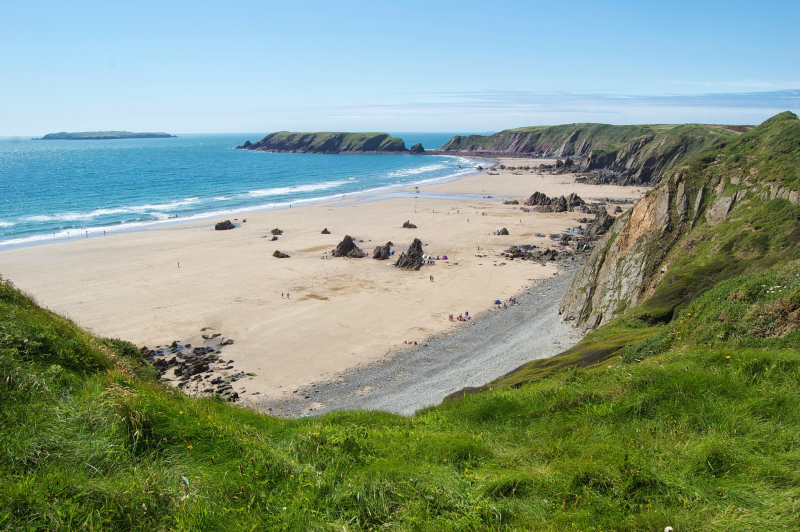
Marloes Sands, Wales 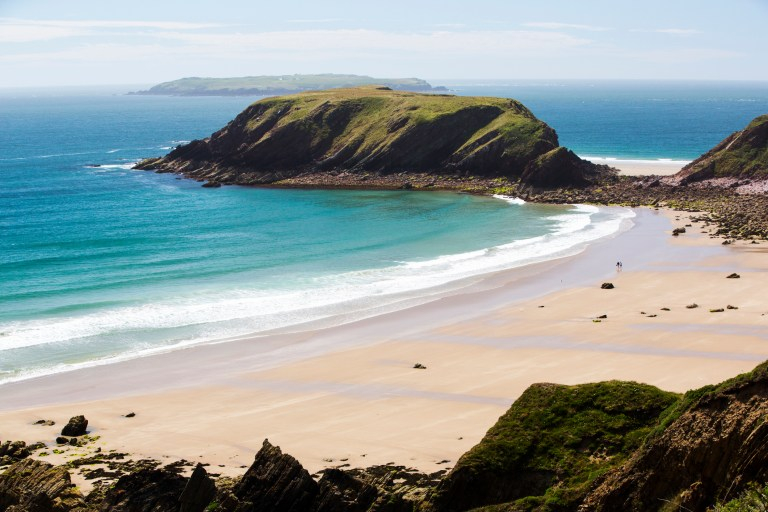
Marloes Sands, Wales -
Pedn Vounder has arguably of the nicest coastline in the UK, with gulf stream-kissed white sands and sparkling blue water that you'd expect to find in the Mediterranean. Pedn Vounder is a little difficult to get to – either by the nearby Porthcurno beach or a scramble down some rocks – but the cove is well worth the effort. The pure water and granite knives that rise around it are a sight to behold, and the isolation makes it a popular place for naturalists.
When you consider the vicinity to Treen Village and the neighboring stunning monuments, Pedn Vounder Beach is in a great position. Plan your visit to Pedn Vounder carefully, as there are no amenities here, unlike at Porthcurno Beach. You don't want to walk the 20 minutes along the cliffs just to discover you forgot the water. When you get to this location, you should go to the following places: The Mount of Saint Michael. (Marazion is a short distance from the Penzance port), Lizard Point No. 2 (The Lizard peninsula is a 40-minute drive east of Penzance) and Kynance Cove is number three (At Kynance Cove, you may anticipate beautiful blue sea and white sandy beaches.)
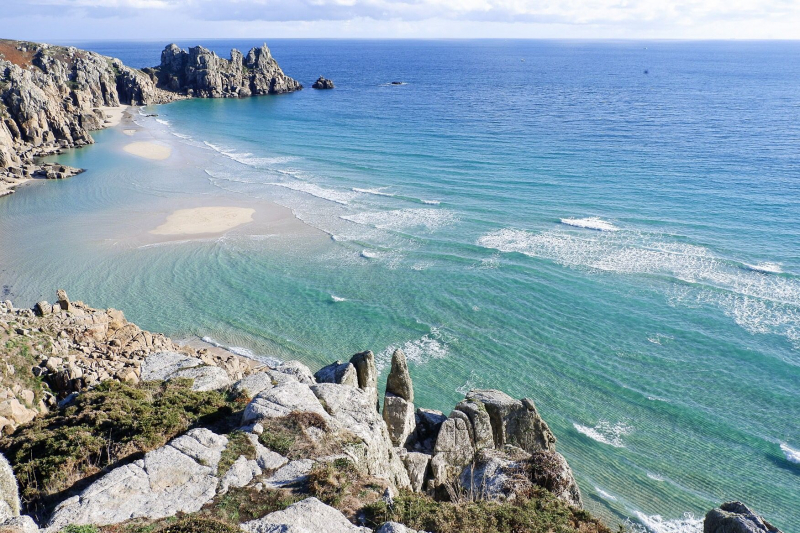
Pedn Vounder, England 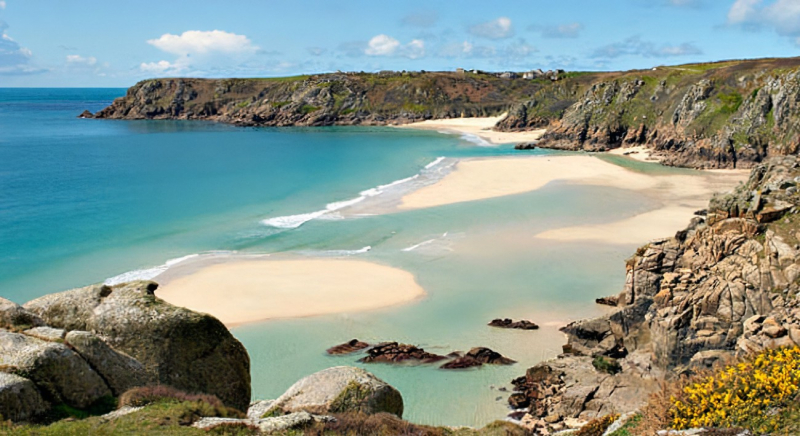
Pedn Vounder, England -
Why choose between having the sea on one side of your body and having it on both? St Ninian's Isle has a natural sand causeway connecting it to Shetland, which is where you'll find this special small beach. The discovery of St Ninian's Treasure - a collection of antiquities dating from roughly 800 AD – by a local kid in 1958 made it famous. It is now simply one of Scotland's best and most unique beaches.
The largest shell-and-sand tombolo (sand or gravel isthmus) in Britain lies a few miles beyond Bigton. St Ninian's Isle, with its green top, is home to the remnants of a 12th-century chapel where a legendary hoard of silver Pictish treasure was discovered. The treasure is presently maintained in Edinburgh's Museum of Scotland, with copies in Lerwick’s Shetland Museum.
St. Ninians Isle beach is a wide tombolo (a natural sand causeway with sea on each side) on Shetland's west coast that connects the South Mainland with the Isle. Bigton, the neighboring settlement, is easily accessible. The beach itself is lovely, and it is frequently included in Shetland advertising materials and images. You may wander around the island and take in the scenery, or you can visit the ruins of the little chapel.
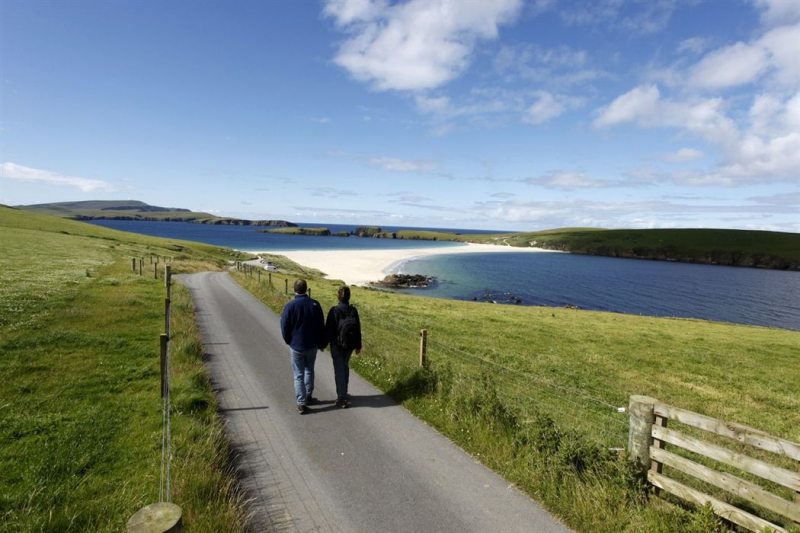
St Ninian’s Isle, Scotland 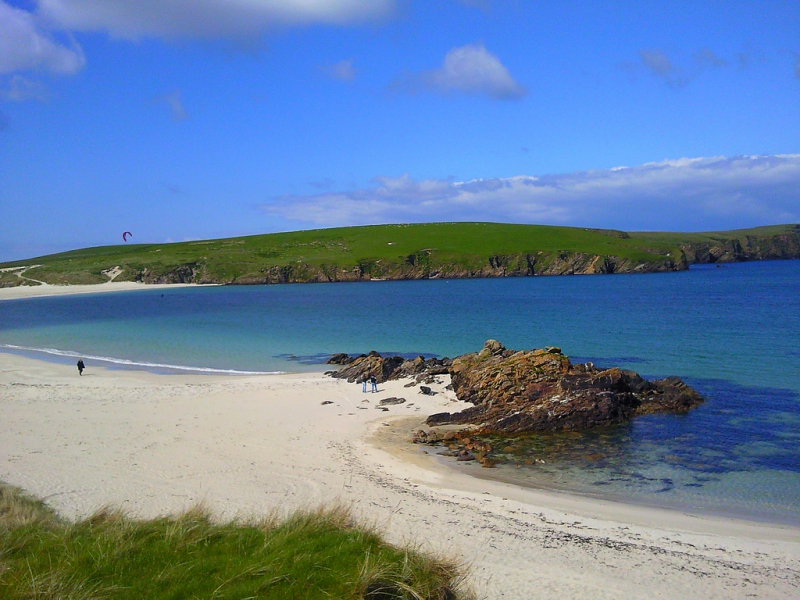
St Ninian’s Isle, Scotland -
The Isle of Wight has a lot to offer, and with ferries departing from Lymington, Portsmouth, and Southampton, it's easy to get to and well worth the trip. Great beaches line the island, with Compton Bay in particular striking out.
It's a long stretch of sand with towering white chalk cliffs, with a hint of pink in the summer months as the orchids bloom, attracting uncommon butterfly species. It's also an excellent site to go fossil hunting, with new riches being unearthed in the rock by the ocean waves, as they are elsewhere on the Isle of Wight.
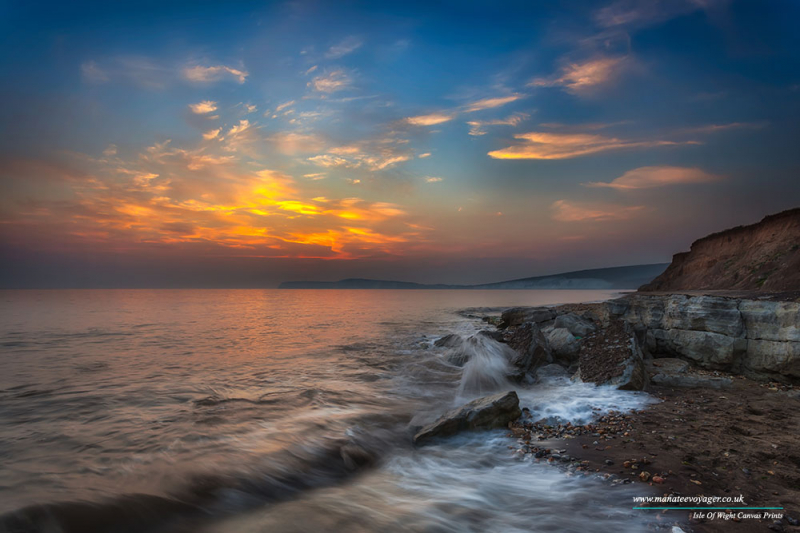
Compton Bay, Isle of Wight 
Compton Bay, Isle of Wight














